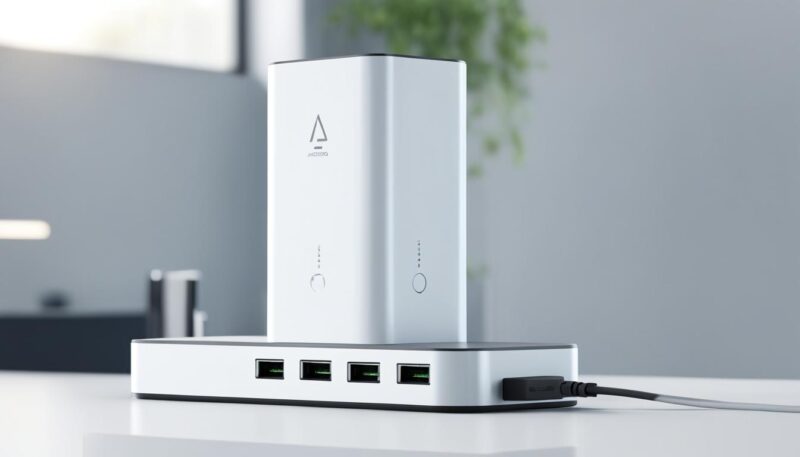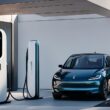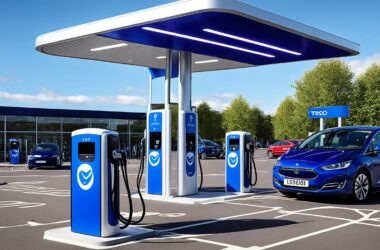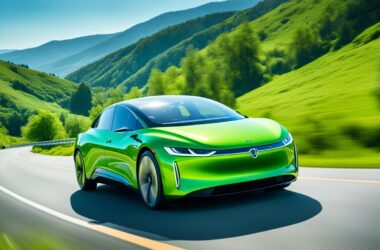Anderson Chargers are highly regarded for their reliability and performance in providing power solutions for various applications. Whether you need to power your electric vehicle, distribute power to different devices, or connect power cables, Anderson Power Products has a range of chargers and accessories to meet your needs.
In this review, I will compare the top models offered by Anderson Power Products, considering their features, functionality, and suitability for different applications. Whether you are looking for an Anderson SB50 or SB350 charger, an Anderson Powerpole connector, or an Anderson Power Cable for your specific power distribution requirements, this comprehensive review will help you make an informed decision.
Key Takeaways:
- Anderson Chargers offer reliable and efficient power solutions for various applications.
- Anderson Power Products provide a range of charger models, connectors, and cables to meet different needs.
- Consider the specific features and functionality of each Anderson Charger model before making a purchase.
- Ensure compatibility between the Anderson Charger and your specific power requirements.
- Refer to this review to compare the top Anderson Charger models for an informed decision.
Factors to Consider When Buying a Home EV Charger
Before purchasing a home EV charger, there are several factors to consider. These include the power rating of the charger, whether it is tethered or untethered, the type of EV charger plug, compatibility with your vehicle, installation considerations, smart features, the type of power connection in your home, price, design and aesthetics, as well as warranty and support.
Power Rating
The power rating of a home EV charger determines its charging speed. Higher power ratings allow for faster charging times. Common power ratings for home EV chargers include 3.6kW, 7kW, and 22kW. It is important to select a charger with a power rating that matches your vehicle’s capabilities.
Tethered vs Untethered Chargers
Home EV chargers can be either tethered or untethered. A tethered charger has a built-in charging cable, providing convenience and ease of use. On the other hand, an untethered charger requires a separate charging cable and allows for flexibility in terms of cable length and type. Consider your charging needs and preferences when choosing between tethered and untethered options.
EV Charger Plug Type
EV chargers come with different plug types to match the socket on your electric vehicle. The most common plug types are Type 1 and Type 2. Type 1 plugs, also known as J1772 plugs, are commonly used for electric vehicles in the United States. Type 2 plugs are the standard socket for EVs in the European Union since 2014. Ensure that the charger plug type is compatible with your vehicle’s socket.
Compatibility and Installation
When selecting a home EV charger, it is crucial to ensure compatibility with your electric vehicle. Check the charger’s compatibility with your vehicle’s make and model to avoid any issues. Additionally, consider the installation requirements of the charger, such as mounting options and electrical connection specifications.
Smart Features
Some home EV chargers offer smart features, such as smartphone apps, scheduling capabilities, and energy monitoring. These features provide convenience and allow for better control and optimization of your charging sessions. Consider whether these smart features are important to you when choosing a charger.
Type of Power Connection
The type of power connection in your home can impact the power rating options for your EV charger. Most homes in the UK have a single-phase electricity connection, which supports up to a 7kW charger. Homes with a three-phase electricity connection can accommodate a 22kW charger for faster charging times. It is important to identify the type of power connection you have before selecting a charger.
Price, Design, and Warranty
Consider your budget when choosing a home EV charger. Prices can vary based on the brand, features, and power rating. Additionally, consider the design and aesthetics of the charger, as it will be installed in your home. Lastly, check the warranty and support offered by the manufacturer to ensure peace of mind and reliable after-sales service.
By carefully considering these factors, you can make an informed decision when buying a home EV charger that best matches your needs and preferences.
Power Rating Options for Home EV Chargers
When it comes to home EV chargers, power rating is an important consideration. The power rating determines the charging speed of your electric vehicle, so it’s crucial to choose the right option for your needs. In this section, I will discuss the different power rating options available, ranging from 3.6kW to 22kW chargers.
Most home EV chargers offer three power rating options: 3.6kW, 7kW, and 22kW. These ratings indicate the maximum power output of the charger, which directly affects the charging speed of your electric vehicle.
For instance, a 3.6kW charger is ideal for overnight charging or when you have more time available for charging. It provides a slower charging speed but can still replenish a significant amount of range overnight.
If you prefer faster charging times, a 7kW charger is a great option. With a higher power rating, it can charge your electric vehicle more quickly, allowing you to conveniently top up the battery during daytime or shorter periods.
For those who require even faster charging, a 22kW charger is the most powerful option. This power rating is suitable for EV owners who need rapid charging capabilities, such as commercial fleets or vehicles with larger battery capacities.
It’s important to note that most home EV chargers utilize AC (Alternating Current) electrical charging. AC charging is the standard for residential charging, and it is the most common type of charging method for EVs. On the other hand, DC (Direct Current) electrical charging is typically used in commercial environments, such as DC fast-charging stations along highways or at public charging stations.
Choosing the right power rating for your home EV charger depends on your specific requirements and charging preferences. Consider factors such as your daily driving habits, the available charging time, and the capacity of your electric vehicle’s battery. It’s also essential to ensure compatibility with your vehicle’s onboard charger and any electrical infrastructure upgrades that may be necessary.
In the next section, we will explore the differences between tethered and untethered EV chargers, helping you make an informed decision for your home charging setup.
Tethered vs Untethered EV Chargers
When it comes to choosing a home EV charger, you’ll encounter two options: tethered chargers and untethered chargers. Both have their own advantages and considerations, so let’s explore the differences to help you make an informed decision.
Tethered Chargers
A tethered charger is equipped with a permanently attached charging cable. This eliminates the need to carry or store a separate cable, providing convenience and ease of use. With a tethered charger, you can simply plug in your electric vehicle and start charging without any additional setup.
One notable advantage of tethered chargers is their hidden cable technology. Take, for example the Andersen A2 charger which features this innovative solution. The hidden cable technology allows the cable to be neatly concealed within the charger, creating a sleek and clutter-free charging experience.
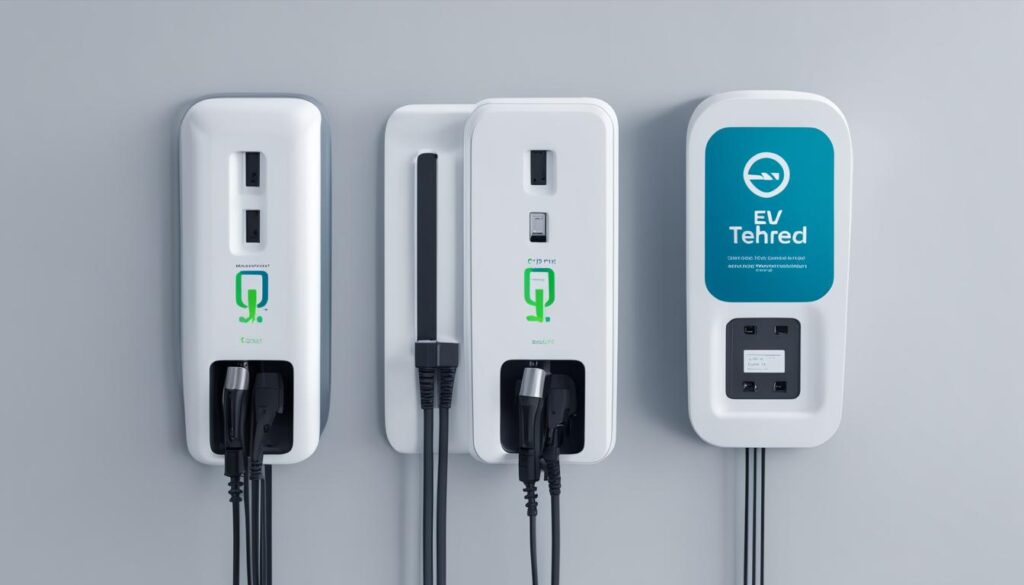
Untethered Chargers
On the other hand, untethered chargers provide the flexibility to use different charging cables. This means you can use a single charger with multiple vehicles or easily replace the cable if it gets damaged. However, it’s important to note that with untethered chargers, you’ll need to have a separate cable on hand each time you charge your EV.
While untethered chargers offer versatility, they may require extra effort in terms of cable management. You’ll need to ensure that the charging cable is stored safely and protected from any potential damage or theft.
Ultimately, the choice between a tethered and untethered charger depends on your specific needs and preferences. If convenience and a clean aesthetic are important to you, a tethered charger with hidden cable technology may be the ideal option. Alternatively, if versatility and the ability to use different cables are more important, an untethered charger could be the better choice.
EV Charger Plug Types
When it comes to selecting an EV charger for your electric vehicle, one crucial consideration is the plug type that matches your vehicle’s socket. This ensures a secure and compatible connection between the charger and your EV. The two most common plug types are the Type 1 socket (also known as J1772) and the Type 2 socket, with the latter being the standard socket for EVs in the European Union since 2014.
With the Type 1 socket, you’ll find a single-phase charging capability, making it suitable for a wide range of electric vehicles. On the other hand, the Type 2 socket offers both single-phase and three-phase charging capabilities, providing greater flexibility for charging requirements.
It’s important to note that the Type 2 connector is designed to be compatible with both Type 1 and Type 2 sockets, allowing for seamless connectivity between different EVs and charging infrastructure.
To ensure a hassle-free charging experience, make sure to check the plug type compatibility between the EV charger and your vehicle’s socket before making a purchase decision.
Comparison of EV Charger Plug Types
| Type of Plug | Socket Type | Charging Capabilities |
|---|---|---|
| Type 1 (J1772) | Type 1 socket | Single-phase charging |
| Type 2 | Type 2 socket | Single-phase and three-phase charging |
Choosing the Right Home EV Charger for Your Power Connection
The type of power connection in your home is crucial in determining the suitable home EV charger power rating. Most homes in the UK have a single-phase electricity connection, which supports up to a 7kW charger. Homes with a three-phase electricity connection can accommodate a 22kW charger for faster charging times. It is essential to identify the type of power connection you have before selecting a charger.
When it comes to home EV charging, understanding the power connection in your home is key. Whether you have a single-phase or three-phase electricity connection, choosing the right EV charger power rating ensures efficient and reliable charging for your electric vehicle. Let’s take a closer look at the differences:
Single-Phase Electricity Connection
In most homes in the UK, a single-phase electricity connection is the standard. This type of connection is suitable for everyday household appliances and supports up to a 7kW EV charger. A 7kW charger provides a decent charging speed and is typically sufficient for overnight charging or daily use for most electric vehicle owners.
Three-Phase Electricity Connection
Homes with a three-phase electricity connection have the advantage of faster charging times. A three-phase connection allows for higher power output, making it ideal for EV owners looking for quicker charging. With a three-phase connection, you can install a 22kW EV charger, which significantly reduces charging time and ensures your vehicle is ready to hit the road in no time.
Remember, before selecting an EV charger, it’s crucial to identify the type of power connection in your home. This information will help you determine the suitable power rating and find the right charger that meets your charging needs.
Now that you understand the importance of your power connection, it’s time to explore the top Anderson charger models available in the market. Let’s compare their features, performance, and charging capabilities in the next section.
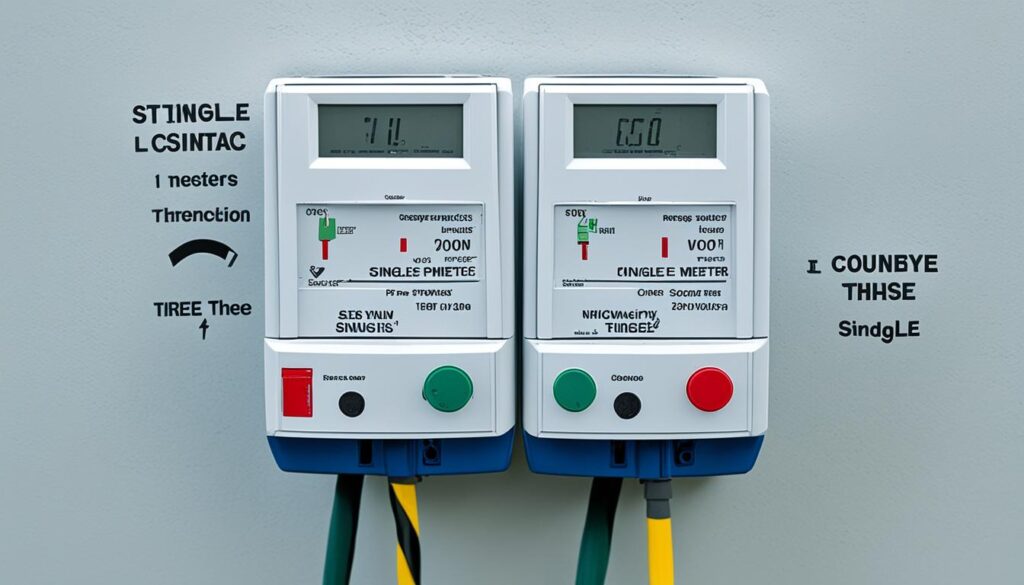
Top Anderson Charger Models Compared
When it comes to reliable and high-quality charger models, Anderson offers a wide range of options to suit various needs. Let’s take a closer look at some of the top Anderson charger models:
| Charger Model | Key Features | Charging Speed | Dimensions | Compatibility |
|---|---|---|---|---|
| Andersen A2 | Smart charging capabilities, compact design. | Up to 7kW. | Dimensions: 220mm x 350mm x 120mm. | Compatible with most electric vehicle types. |
| Easee One | Seamless mobile app integration, dynamic load balancing. | Up to 7kW. | Dimensions: 336mm x 197mm x 116mm. | Compatible with most electric vehicle types. |
| EO Mini Pro 3 | Compact and stylish design, Bluetooth connectivity. | Up to 7.2kW. | Dimensions: 370mm x 152mm x 96mm. | Compatible with most electric vehicle types. |
| Hypervolt Home 3 Pro | Advanced power management, user-friendly interface. | Up to 22kW. | Dimensions: 425mm x 180mm x 85mm. | Compatible with most electric vehicle types. |
| Indra Smart LUX | Intelligent charge scheduling, energy monitoring. | Up to 22kW. | Dimensions: 328mm x 210mm x 85mm. | Compatible with most electric vehicle types. |
| Myenergi Zappi | Enhanced eco-friendly features, divert excess solar energy. | Up to 7kW. | Dimensions: 220mm x 100mm x 100mm. | Compatible with most electric vehicle types. |
| Ohme Home Pro | Intelligent charge optimization, Energy Flex platform. | Up to 7kW. | Dimensions: 172mm x 85mm x 50mm. | Compatible with most electric vehicle types. |
| Pod Point Solo 3 | Future-proof design, OLEV grant eligible. | Up to 7kW. | Dimensions: 363mm x 236mm x 26mm. | Compatible with most electric vehicle types. |
| Rolec WallPod | Robust construction, vandal-resistant design. | Up to 7.2kW. | Dimensions: 410mm x 230mm x 170mm. | Compatible with most electric vehicle types. |
| Wallbox Pulsar Max | Enhanced safety features, dynamic load balancing. | Up to 22kW. | Dimensions: 320mm x 270mm x 137.5mm. | Compatible with most electric vehicle types. |
These Anderson charger models offer varying features to cater to different customer preferences. Whether you prioritize smart charging capabilities, compact design, energy management, or any other specific requirement, you can find a suitable option among the available Anderson chargers.
Conclusion
In conclusion, Anderson Chargers provide reliable power solutions for home EV charging. After comparing the top models available in the market, it is evident that Anderson Chargers offer a range of features and performance that meet various needs.
When selecting an Anderson Charger, it is essential to consider factors such as power rating, whether you prefer a tethered or untethered option, the EV charger plug type, and the power connection type in your home. These considerations will ensure that you choose the right charger model for your specific requirements.
With Anderson Chargers, you can trust in the reliability and efficiency of your charging experience. Whether you opt for the Andersen A2, EO Mini Pro 3, Myenergi Zappi, or any other top model, you can rest assured that Anderson Chargers provide reliable power solutions for your electric vehicle.





